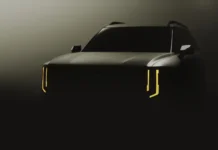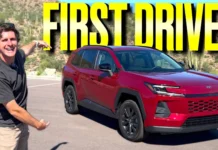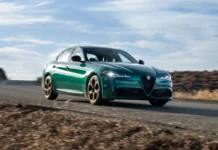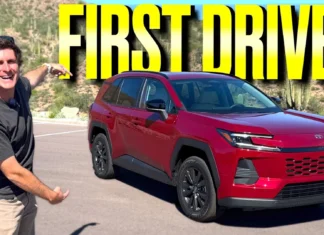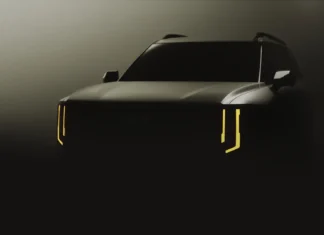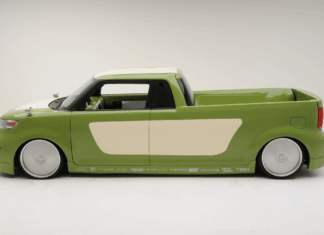
Hyundai’s 258-mile range figure beats out competitors like the Nissan LEAF and Chevy Bolt.
You know, it really takes sitting in an endless traffic jam for electric cars to start making sense. On Hyundai’s invitation, I recently went out to Los Angeles to test the 2019 Hyundai Kona Electric – the technical details of which we posted last week. More specifically, I spent most of my drive time stuck in traffic on I-405 and in Beverly Hills on the way back to the hotel.
Mind you, that’s not a terrible place to be stuck. There’s plenty of things and people to see, and there’s also plenty to hear. Like the symphony of idling engines around the altogether more silent Kona Electric. That’s where it hits you: “Hey, I’m not burning any gas right now. This traffic isn’t forcing me to waste my hard earned money going nowhere.” Of course, since it’s an electric car, you’re not wasting any fuel, and you’re not emitting any noxious greenhouse gases. Those are certainly points in the plus column, but how does the rest of the 2019 Hyundai Kona Electric stack up?
Performance – lively
Thanks to that instant torque, you’re not going to feel like a liability on the road. In fact, there’s 201 horsepower and 290 lb-ft of torque on board, fed by a 64-kWh battery pack. 0-60 comes up in 7.6 seconds, and it felt like it as I accelerated onto the 101 and southbound I-405 toward Beverly Hills – the setting where, for three or four glorious minutes, I actually got to open the taps in LA’s notorious traffic.
The Kona Electric feels willing and eager, since all that torque is available instantly. No muss, no fuss – no waiting for revs and fishing for gears. However, there is a down side. As this crossover has to cart an electric motor and that huge battery pack around, it’s still slightly slower than its gasoline-powered stablemate. It’s also only available in front-wheel drive, unlike its cousin. Still, the instantaneous acceleration can throw you back in your seat. I relished every opportunity I had to leap out in front of traffic from the lights, and that’s fun.
Around the corners, the Kona Electric feels competent, if not – and excuse the pun – electric. Like the gasoline-powered Kona, it handles like a crossover. Forgive its tendency to roll when you push it, and it’s not bad at all. The ride was also compliant – at no point did I notice my fillings shaking out of my skull on the road.
Range – capable
Then there’s Hyundai’s advertised 258 miles of range. That’s more than the Chevrolet Bolt, and a wide margin greater than the Nissan Leaf. Of course, that’s down to the size of its battery. A 40-kWh battery is the largest currently on offer than the LEAF, and the Bolt’s is a 60-kWh unit. Since the Kona Electric has 64 kilowatt-hours of charge, I never felt anxious at any point like I have in the Leaf or BMW i3 (without the range extender).
The 2019 Hyundai Kona Electric comes with a 7.2-kilowatt charger as standard. On a Level 2 charger you’ll likely have at home, that means a full charge in nine and a half hours. However, on a DC fast charger, the Kona will hit 80 percent charge in 54 minutes. That’s still a detractor for someone like me who enjoys road trips. I also have the insane tendency to drive 18 hours straight without stopping, which I would not be able to do in the Kona Electric. Nevertheless, it’s more range than we’ve gotten out of most electric cars to date, save Tesla’s offerings.
Technology – plentiful
Now, you still get all the standard technology you get in a standard Kona. That means an 8.0-inch touchscreen infotainment display with Android Auto and Apple CarPlay. You also get Hyundai Blue Link’s connectivity features. That allows drivers to check on their battery status, set their charging schedule, set the climate controls in the morning, and more besides. The Limited trim adds LED lights, premium seats, a sunroof and wireless phone charging. There’s also an Ultimate trim level, which adds a navigation system, heated steering wheel, ventilated front seats and an Infinity premium audio system.
The Kona Electric also uses paddle-based regenerative braking, which allows for one-pedal driving. There are three different levels of regeneration (four if you include Level 0, which allows freewheeling). On top of that, you can also hold the left paddle to effectively brake the car without touching the actual pedal. That was useful as I approached my first (and last) traffic snarl.
On sale soon, but only in certain markets
Overall, the Kona Electric is an enjoyable experience as an electric car. The torque is great, and zero emissions is even better. What’s more, all the tech on offer will keep you occupied as you sit in traffic jams, at least for awhile. That said, the dinosaur in me still perked up as I heard the throng of supercars roaring their way through the streets of Beverly Hills.
If you were hoping the 2019 Hyundai Kona Electric would be available in all 50 states, I have some disappointing news. While GM made the Bolt available nationwide, Hyundai will not be doing the same here. Instead, it will go on sale in early 2019 in California and other EV-heavy states. The automaker does plan to eventually expand the Kona Electric’s availability nationwide. However, since the vast majority of EVs are sold in California, focusing on that market makes the most sense.
At time of writing, Hyundai has not announced pricing on the 2019 Kona Electric. We expect to find out more about that in the coming days. Stay tuned to TFLcar.com for more news, views and real-world reviews!





